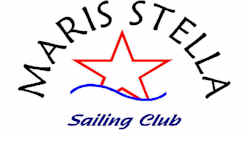|
[ The Club ] [ News From Bookshop ] [ Our Contacts ] [ Next Door Friends ] [ Ocean Sailing ] [ Paul Silver Page ] [ Doctor Fernando ] [ Charley News ] [ Muni Fashion ] [ Music on Board ] [ Events ! ] [ Cooking on Board ] [ Aid For Navigation ] [ Sail With Us ] [ Search Engines ] [ Curio's ] [ Millenium Calendar ] [ Merry Chrismas ]
Advertisement
Area
| |
 Lat 18°22'N Log 65°55'W Lat 18°22'N Log 65°55'W
Ocean Sailing and Boating by
Albert
 mail to Albert mail to Albert
News from the Oceans,
Send me your comments,
experiences, emotions we give them to all our friends.
 Albert says this Month
Read also:
Albert says this Month
Read also:
October
1999
November 1999
Who Needs an EPIRB?
About three years ago what started as a pleasant, early spring cruise
from Charleston, SC to Annapolis, MD almost turned into a tragedy. A
vicious northeaster caught us about 350 miles southeast of Cape
Hatteras. Our sailboat was capsized by breaking seas and left disabled
in the midst of a raging storm. Well out of range of VHF radio and
without an SSB radio on board,there was no way for us to send a Mayday.
No way, that is, except turning on our Emergency Position Indicating
Radio Beacon (EPIRB) and hoping for the best. It worked: at daybreak,
the following morning we heard the wonderful noise of a C-130 aircraft
which the US Coast Guard had sent looking for us.
What had happened was really very simple. For the whole night our little
EPIRB kept transmitting a distress signal on 121.500 MHz and 243.000
MHz. Either a civilian aircraft (monitoring 121.500 MHz) or a military
aircraft (monitoring 243.000 MHz) must have picked up our mournful beep
and alerted the Coast Guard. The same signal then guided the Coast Guard
aircraft to our location (after several hours of search) and to our
eventual rescue.
We were lucky: our EPIRB was an old model, based on a technology which
is now obsolete. In fact, if no aircraft happened to be in the area or
was not monitoring the distress frequency, our signal would not have
been heard. Or even if it was, the signal might not have been strong
enough to guide the radio direction finder on the Coast Guard plane to
our location. Looking for a small boat in a big ocean is a lot worse
than trying to find the proverbial needle in a haystack.
That was then. Now we would have onboard a satellite EPIRB, transmitting
our cries for help to a chain of communication satellites that would
relay them to the (one hopes) concerned authorities. In fact, there are
now two such chains, with worldwide coverage. Under the first one, known
as the COSPAS-SARSAT system and operated by the US, Canada, France and
the Russian Federation, EPIRBs send a distress signal and a code
identifying the vessel on 406.025 MHz. By exploiting the Doppler
principle, the satellite can locate the transmitting EPIRB within about
two miles. It will store the information and then download it as it
overflies the nearest monitoring station (in the Mediterranean area
there is one in France and one in Spain).The search for the vessel in
distress is the facilitated by a homing signal which the EPIRB also
transmits on 121.500 MHz.
The second satellite chain, known as INMARSAT and owned by 75 countries
including Italy, uses a similar technology, except that its EPIRBs
transmit on 1.6 GHz (the INMARSAT E, L Band).
New models of satellite EPIRBs have come to the market in the last few
months which incorporate a GPS or have a cable proving an interface with
the GPS you have on board. When activated, the EPIRBs with GPS
incorporated transmit both the distress signal and the current position
data (which are then updated every 20 minutes). The other model would
transmit the last position that the unit was able to obtain from the
boat GPS (keep the GPS on or you might be in trouble....).Since the GPS
positions available to civilian users are supposed to have a margin of
error of +/- 100m 95% of the time, this should drastically reduce the
time required for search and rescue.
Satellite EPIRBs, which under the SOLAS convention are mandatory
equipment for cargo ships over 300 tons and all passenger ships on
international voyages, are either manually deployable or automatically
deployable when submerged.The basic models are about the size of a small
fire extinguisher and weigh two or three pounds. Those automatically
deployable and those that incorporate a GPS are a little more bulky, but
their weight at about five or six pounds should not worry even the most
fanatical among the sailboat racers. All satellite EPIRBs are designed
to operate for at least 48 hours at -20 C, and much longer at more
hospitable temperatures. Their price in the US currently ranges from
about $800 (for the simplest models) to about $ 2,000 (for the automatic
model with GPS incorporated).
Are satellite EPIRBs worth the cost? Every penny of it, if you ask me.In
fact, I believe that no sailor venturing offshore should go without an EPIRB.
[ Home ] [ Up ] [ Albert News August 2000 ] [ Albert News October 2000 ] [ Albert News Dec 2000 ] [ Albert News February 2001 ] [ Albert News Oct 99 ] [ Albert News Nov99 ] [ Albert News Dic99 ] [ Albert News Jan2000 ] [ Albert News Feb 2000 ] [ Albert News March 2000 ] [ Albert News April 2000 ] [ Albert News June 2000 ]
|
 MARIS STELLA SAILING CLUB
MARIS STELLA SAILING CLUB